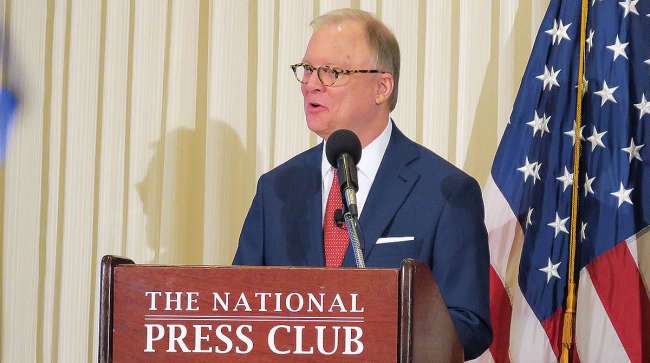Senior Reporter
GAO’s Recommendations on NTSB’s ‘Most Wanted List’ Prompt Action

[Stay on top of transportation news: Get TTNews in your inbox.]
The head of the National Transportation Safety Board agreed more transparency would improve the public’s understanding of a high-profile report after a federal watchdog recommended better access to its methodology.
A deep dive by the Government Accountability Office determined that raising the level of transparency for NTSB’s Most Wanted List would enhance the public’s understanding of the agency’s rationale.
“We agree with the report’s conclusion that ‘the credibility of the list is vital to rally support and resources to tackle often difficult and long-standing transportation safety challenges,’ and that our process of evaluating and selecting the issues we include on the list should be transparent,” NTSB Chairman Robert Sumwalt told GAO on March 3, noting his agency would update GAO about the implementation of the recommendations. Sumwalt’s comments were included in the GAO’s report.
Gao by Transport Topics on Scribd
He added, “Indeed, transparency is one of the core values that guide our daily actions, our internal conduct and our relationships with our stakeholders.”
Specifically, the watchdog recommended NTSB require its team to document its evaluations for matters under consideration for its Most Wanted List. Additionally, NTSB should proceed to publicly and fully communicate criteria used for labeling a specific transportation safety concern as “ripe for action.”
According to GAO: “If advocacy groups, industry associations and others don’t know why NTSB is advocating for these particular safety issues and recommendations, that could affect their attention to and support for tackling the issues on the list.”
GAO reviewed NTSB’s documents about the process for evaluating and selecting issues and recommendations for the Most Wanted List, such as the published methodology report and internal guidance.
“While GAO was able to determine the rationale for NTSB’s evaluation and selection decisions, NTSB’s guidance does not require NTSB to fully document or communicate its decision, and NTSB does not do so,” GAO indicated. “Greater transparency in how issues are evaluated and selected could enhance users’ understanding of the list and help ensure the list continues to rally the support and resources needed to tackle difficult and long-standing transportation safety challenges.”
Compare each of the presidential candidates' plans for addressing America's infrastructure needs. See our Candidate Infrastructure Tracker.
GAO’s findings were published last month.
NTSB, an independent agency, is tasked with investigating high-profile crashes. Its team publishes a Most Wanted List of priorities. Such safety priorities for regulators and policymakers have included implementing the automatic positive train control (PTC) braking system for railroads, ensuring the safe shipment of hazardous materials and reducing fatigue-related accidents.
“We are calling for a comprehensive approach to combating fatigue in transportation, focusing on research, education and training; technology; sleep disorder treatment; hours-of-service regulations; and on- and off-duty scheduling policies and practices,” according to the list.
Additionally, “PTC must be fully implemented before the extended deadline to ensure the safety of railroad passengers and the people who live and work near railroads.”
NTSB showcases the list as a tool for raising awareness and to advocate for the adoption of key concerns. NTSB is not authorized to implement its recommendations. Last year, the Senate confirmed Sumwalt to continue to serve on the board. He began his tenure in 2006 and was confirmed as chairman in 2017.
Want more news? Listen to today's daily briefing:




